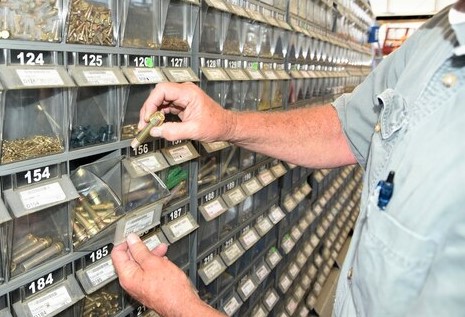Facility procurement standards
Contents |
[edit] Introduction
For facility management professionals, procurement standards provide guidelines for making consistent, effective purchasing decisions. In some instances, procurement standards can be complex due to the types of facilities, such as, healthcare and education facilities.
By having accepted programme of procurement standards for key items in place, facilities managers are able to easily maintain an adequate inventory of equipment, parts, tools, supplies, furnishings and so on. This allows them to handle repairs on vital equipment efficiently and to respond quickly to service requests from building occupants.
[edit] What is in a facility procurement standards programme?
Facility procurement standards programmes generally cover all aspects of operations including the physical structure itself through to the soft furnishings inside and more elaborate systems that keep the facility running. Whether purchasing new equipment, updating furniture, replacing building components or performing preventive maintenance, facility professionals can establish a standards programme to deliver a consistent level of supply and so a reliable level of comfort and service.
Procurement standards programmes should be flexible and wide ranging, as organisations may have (particularly those with multiple sites or facilities) different types of buildings of different ages, construction, purpose and so on. In organisations that focus on technology and innovation, these procurement programmes can become obsolete quickly. In a hospital, there might be a standards programme specifically for products and services associated with HVAC systems, lighting, health and safety, fabrics and finishes and other components that are directly related to the delivery of a certain level of care for patients.
[edit] Why are facility procurement standards helpful?
A standards programme can help plan projects, maintain continuity of the organisation’s services and save time on purchasing decisions. Some facilities professionals even opt to publish the organisation’s procurement standards so employees can have reasonable expectations. Without procurement standards, organisations would have to go through a complex selection process for each maintenance, renovation or construction project.
[edit] Finding a starting point
For some organisation, the most difficult aspect of creating a procurement standards programme is knowing where to start. A simple first step is to check if other organisations within the same business sector have made their programmes available online. Networking connections can help to expedite this process.
There are also established standards programmes, such as those set by the LEED-EB (Leadership in Energy and Environmental Design) Green Building Rating System. This voluntary, consensus based standard is specifically designed for developing high performance, sustainable buildings. For more information, visit this link.
[edit] Related articles on Designing Buildings Wiki
Featured articles and news
RTPI leader to become new CIOB Chief Executive Officer
Dr Victoria Hills MRTPI, FICE to take over after Caroline Gumble’s departure.
Social and affordable housing, a long term plan for delivery
The “Delivering a Decade of Renewal for Social and Affordable Housing” strategy sets out future path.
A change to adoptive architecture
Effects of global weather warming on architectural detailing, material choice and human interaction.
The proposed publicly owned and backed subsidiary of Homes England, to facilitate new homes.
How big is the problem and what can we do to mitigate the effects?
Overheating guidance and tools for building designers
A number of cool guides to help with the heat.
The UK's Modern Industrial Strategy: A 10 year plan
Previous consultation criticism, current key elements and general support with some persisting reservations.
Building Safety Regulator reforms
New roles, new staff and a new fast track service pave the way for a single construction regulator.
Architectural Technologist CPDs and Communications
CIAT CPD… and how you can do it!
Cooling centres and cool spaces
Managing extreme heat in cities by directing the public to places for heat stress relief and water sources.
Winter gardens: A brief history and warm variations
Extending the season with glass in different forms and terms.
Restoring Great Yarmouth's Winter Gardens
Transforming one of the least sustainable constructions imaginable.
Construction Skills Mission Board launch sector drive
Newly formed government and industry collaboration set strategy for recruiting an additional 100,000 construction workers a year.
New Architects Code comes into effect in September 2025
ARB Architects Code of Conduct and Practice available with ongoing consultation regarding guidance.
Welsh Skills Body (Medr) launches ambitious plan
The new skills body brings together funding and regulation of tertiary education and research for the devolved nation.
Paul Gandy FCIOB announced as next CIOB President
Former Tilbury Douglas CEO takes helm.
UK Infrastructure: A 10 Year Strategy. In brief with reactions
With the National Infrastructure and Service Transformation Authority (NISTA).























